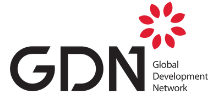
The Doing Research Assessment is the methodology developed by GDN to study the research system, after its pilot in 11 countries. It includes three steps to analyze the factors that impact the social science research system in a given country or region and will lead to several knowledge outputs and awareness raising efforts. See below steps and activities to implement a Doing Research Assessment.
The implementation of Doing Research Assessments is based on
Step 1 | An overall assessment of the context for doing research along economic, political, historical and international dimensions
Step 2 | Mapping of national research actors to identify research producers and users
Step 3 | The context assessment and mapping of national research actors are then used as inputs into the Doing Research Assessment Framework, using a combination of secondary data, surveys, and interviews
Doing Research Assessment Framework
The Doing Research Assessment Framework is a mixed method research module that allows a contextualized comparative enquiry into a national research system, looking at key factors that determine the production, diffusion and uptake of social science. It would typically serve as a magnifying glass to identify aspects that need attention of the regulator, or to provide a baseline for strategizing investments in capacity building for research production, its diffusion or its use.
|
|
1. Production |
2. Diffusion |
3. Policy uptake |
|
Inputs |
1.1 Research inputs |
2.1 Actors & networks |
3.1 Policy-friendly research |
|
Activities |
1.2 Research culture and support services |
2.2 Research communication practices |
3.2 Research-based policy making |
|
Outputs |
1.3 Research output & training |
2.3 Research communication products |
3.3 Research-based policy tools |
|
Outcomes |
1.4 Opportunities & sustainability |
2.4 Popularization of science |
3.4 Research for better policies |
The Framework acts as the basis to compare and benchmark research systems from different countries and includes 54 indicators spread according to the table before. These indicators are populated according to the national context framed by the NFPs which followed the Guidelines of the project while adapting them to their national environment. Therefore, each country follows the same framework and general guidelines in order for different reports to be comparable on the indicators that define the DRA which is also observable on the DRA Country Reports that follow as well the same structure.
Measuring the Production, Diffusion, and Use of Social Science Research
Factors that enable quality academic knowledge generation are described under the function of production, which targets the creation of research, its output, and the long-term objective to build a quality knowledge base and a critical mass of people valuing and understanding research. In that sense, “production” describes the factors impacting the academic community, from the necessary inputs in terms of people and resources, to the publication of research articles and the role of research in education and training.
The diffusion functions look at factors that enable the circulation and discussion of research-based products within different audience groups in the wider society. The diffusion is therefore about sharing research products and understanding how research is mainstreamed and the role it plays in society and the media.
The uptake is about understanding how research supports policymaking, both directly when researchers are consulted or research is commissioned by policymakers, or indirectly by looking at factors that strengthen the research-to-policy nexus. It is about using research to support better policies and reflects a view shared by many researchers and practitioners that it is desirable to strengthen the link between the research and policy communities.
Data and indicators
The data collection approach to document the list of factors which we have defined involves a combination of secondary data, surveys, and interviews following a mixed method approach. The nature and collection of indicators will also be refined over time with the publication of results and additional observations, critiques and challenges, resulting in progressive improvement of the DRA Framework.
Download the Doing Research Assessment Framework available here. Also read the full publication on the Doing Research Assessment or its Executive Summary.
To support this work, please contact Francesco Obino, Head of Programs on fobino@gdn.int
About the program | Structure & Partners | Methodology | Results | Evidence & Resources | Country Content | Special Projects | Francophone Call | Connect with us





